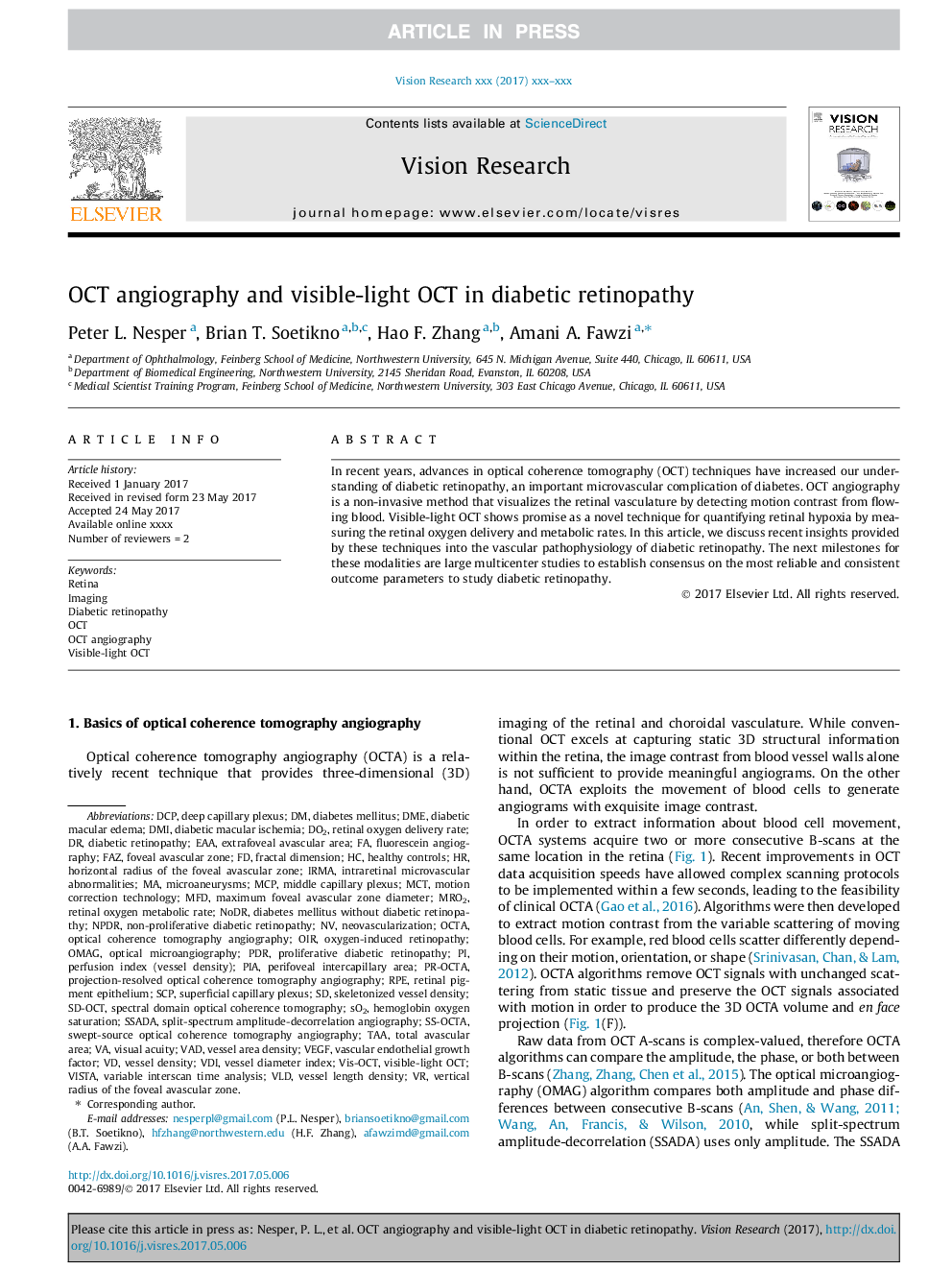| Article ID | Journal | Published Year | Pages | File Type |
|---|---|---|---|---|
| 8795396 | Vision Research | 2017 | 13 Pages |
Abstract
In recent years, advances in optical coherence tomography (OCT) techniques have increased our understanding of diabetic retinopathy, an important microvascular complication of diabetes. OCT angiography is a non-invasive method that visualizes the retinal vasculature by detecting motion contrast from flowing blood. Visible-light OCT shows promise as a novel technique for quantifying retinal hypoxia by measuring the retinal oxygen delivery and metabolic rates. In this article, we discuss recent insights provided by these techniques into the vascular pathophysiology of diabetic retinopathy. The next milestones for these modalities are large multicenter studies to establish consensus on the most reliable and consistent outcome parameters to study diabetic retinopathy.
Keywords
OIRVLDsplit-spectrum amplitude-decorrelation angiographySSADAVDIOCTAIRMAPDRMicroaneurysmsMFDSD-OCTNPDRDO2DCPEAARPEDMIMCTDMEMCPVISTATAAPIASCPOCT angiographyOptical coherence tomography angiographyfluorescein angiographyDiabetic macular edemaHemoglobin oxygen saturationFAZretinal pigment epitheliumOctFractal dimensionVessel densityImagingspectral domain optical coherence tomographyVisual acuitySO2Diabetes mellitusdiabetic retinopathyProliferative diabetic retinopathyNon-proliferative diabetic retinopathyOxygen-induced retinopathyRetinaVascular endothelial growth factorVascular Endothelial Growth Factor (VEGF)deep capillary plexusfoveal avascular zoneOptical microangiographyNeovascularizationVADhealthy controls
Related Topics
Life Sciences
Neuroscience
Sensory Systems
Authors
Peter L. Nesper, Brian T. Soetikno, Hao F. Zhang, Amani A. Fawzi,
